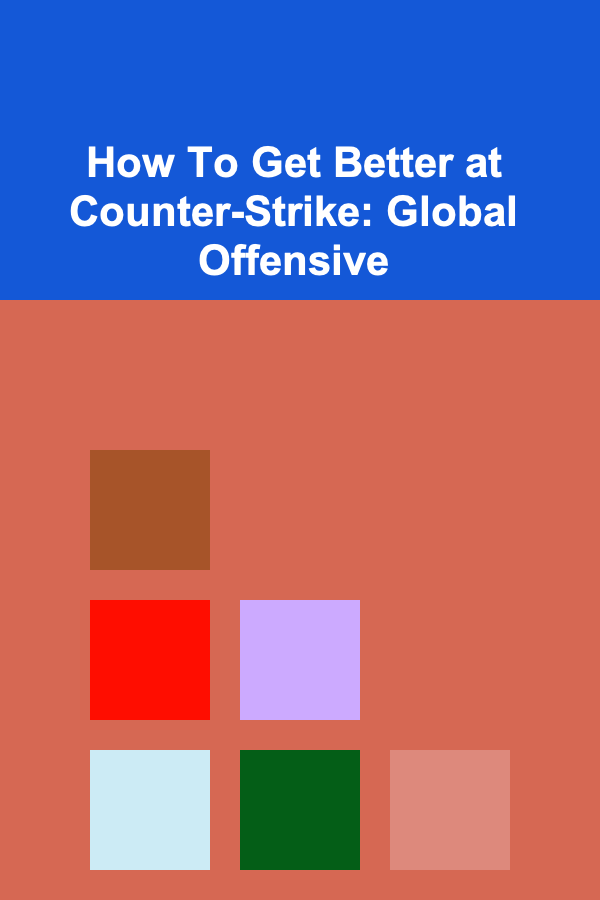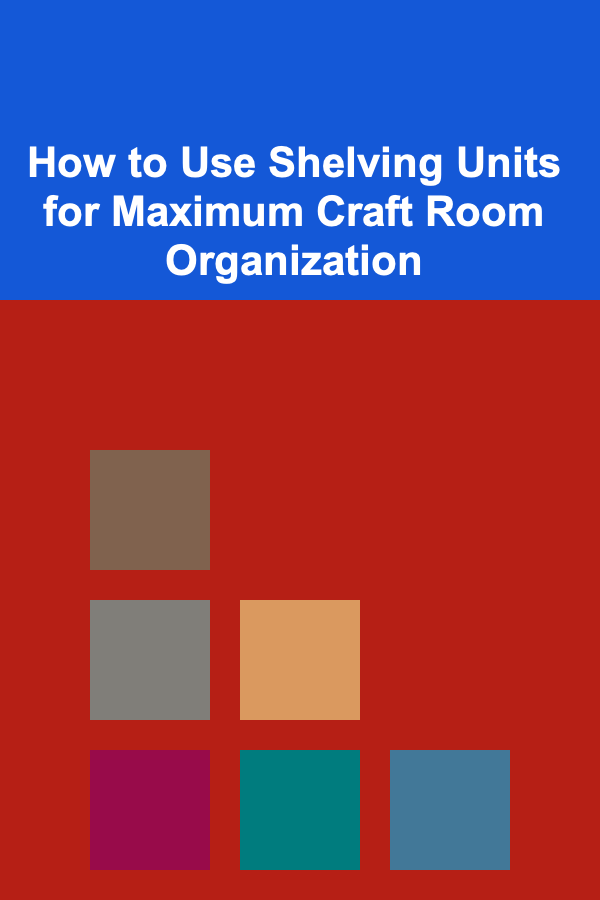
How To Get Better at Counter-Strike: Global Offensive
ebook include PDF & Audio bundle (Micro Guide)
$12.99$10.99
Limited Time Offer! Order within the next:

Counter-Strike: Global Offensive (CS: GO) is a game that has stood the test of time, continuing to be one of the most popular competitive first-person shooters in the world. Despite its popularity and accessibility, many players struggle to progress beyond a certain point in their skill level. Whether you're a beginner trying to improve or a veteran seeking to climb the ranks, mastering CS: GO requires both mechanical skill and game sense. This article will delve into the key strategies, techniques, and mindset shifts required to get better at CS: GO.
Master the Fundamentals
Aim and Accuracy
The cornerstone of success in CS: GO is having good aim. Whether you're playing as a Terrorist or a Counter-Terrorist, landing accurate shots is essential to eliminating the enemy team. Good aim isn't just about reflexes but also about consistency, positioning, and controlling your weapon's recoil.
Aim Training
To start improving your aim, you need to practice regularly. Here are some methods to do so:
- Aim maps: These custom maps are specifically designed to help players practice their aim. Maps like "Aim Botz" and "training_aim_csgo" provide endless targets to help you get used to different situations.
- Deathmatch servers: Playing on deathmatch servers allows you to focus purely on aiming without worrying about strategic decisions. This mode also lets you quickly respawn and practice repeatedly in real combat situations.
- Flick shots: Flick shots are quick, precise shots aimed at enemies that suddenly appear in your line of sight. Practice these shots to improve your reflexes and accuracy.
Crosshair Placement
Good crosshair placement is key to landing shots more efficiently. Always keep your crosshair at head level and aim at likely enemy positions. This reduces the amount of adjustment needed when you encounter an opponent, allowing for faster kills.
Recoil Control
Weapons in CS: GO have a "recoil pattern," which means that the more you shoot, the more your shots will spread. Learning how to control recoil is vital. Each weapon has its own pattern, and understanding and compensating for that pattern can significantly improve your accuracy.
For example:
- The AK-47 has a very strong recoil, and its bullets will spread upward and slightly to the left.
- The M4A4 is more manageable but still requires good control when firing long bursts.
Spend time in training maps or use custom servers to practice spraying and tapping, especially with weapons you use most frequently.
Map Knowledge
Knowing the maps inside and out is a major advantage in CS: GO. Map knowledge doesn't just help with positioning; it also plays a huge role in strategy, communication, and outsmarting the enemy.
Common Map Callouts
Every competitive map in CS: GO has specific callouts used to communicate locations to your teammates. Learning these callouts is crucial, as it helps you convey information quickly and accurately, especially when you're under pressure. Some maps have more complex callouts, but there are general areas you should always be familiar with:
- Dust II: "Long A," "Mid," "B site," "Cat," and "T-spawn" are all crucial callouts to know.
- Inferno: "A site," "Banana," "Coffins," and "Pit" are critical to understand for controlling the map.
- Mirage: "A site," "Tetris," "Jungle," "CT," and "Window" are standard terms for effective communication.
Understanding the Layout
Knowing the layout of a map is just as important as knowing the callouts. Familiarize yourself with each map's choke points, common sightlines, bomb sites, and places where enemies are likely to hide. Understanding the flow of the game on each map allows you to make smarter decisions, like when to rotate or when to hold a site.
Improve Your Game Sense
Game sense is a term that encompasses your overall understanding of the game's mechanics, timing, and strategy. Developing game sense is what separates good players from great players. It allows you to predict enemy movements, make smart decisions under pressure, and contribute to the overall success of your team.
Map Control and Positioning
Good positioning often gives players the upper hand. If you control key areas of a map, you can force the enemy into unfavorable positions. Common positions to control include:
- Mid control: On maps like Mirage, controlling the middle of the map is often crucial. Players who can control mid can apply pressure on both bomb sites and dictate the pace of the game.
- High ground: Elevation often gives you a better view and allows for safer engagements. In maps like Dust II, holding the high ground on Long A can give you an advantage.
- Anchoring sites: If you're defending, it's crucial to know where to hold and when to fall back. Anchoring a bomb site requires patience and the ability to communicate effectively with your team.
Timing and Rotations
Timing is another important aspect of game sense. Understanding when to rotate between sites or when to take a fight can make or break a round. Rotating too early or too late can result in you being caught off guard by the enemy, but rotating at the perfect moment can completely disrupt their strategy.
Make sure to practice good communication with your team, letting them know when you're rotating or when you need support. Timing your rotations with your teammates will ensure you're never outnumbered or caught in a vulnerable position.
Reading the Enemy
As you play more, you'll develop the ability to read the enemy team. Predicting where they will go and how they will act is part of game sense. Here are some things to look for:
- Sound cues: CS: GO has an advanced sound system. Listening carefully to footsteps, gunfire, and utility usage can help you predict where the enemy is and what they're doing.
- Utility usage: Paying attention to when and how the enemy uses grenades (smokes, flashes, molotovs) can give you insight into their strategy. For example, a team that smokes off Long A in Dust II is likely executing a strategy towards that bomb site.
- Enemy behavior: If an enemy is playing aggressively, they may be looking for a pick, while passive players may be trying to hold their position or wait for information.
Communication and Teamwork
CS: GO is a team-based game, and communication is key to success. Even if you have the best aim and game sense, poor communication can ruin your chances of winning a match.
Using Voice and Text Communication
Effective communication can be the difference between winning and losing a round. Whether you're giving callouts, updating your teammates on enemy positions, or strategizing, clear and concise communication is essential. Avoid overloading your teammates with unnecessary information, and focus on what's important:
- Enemy positions: Letting your team know where you saw an enemy or heard footsteps can help them position themselves accordingly.
- Utility usage: Informing your team when you're going to throw a grenade or flashbang is essential to avoid team damage or miscommunication.
- Strategy: Share your plan with your team at the beginning of a round. If everyone is on the same page, it's easier to execute strategies effectively.
Working Together as a Team
Winning in CS: GO requires more than just individual skill; it's about teamwork. Players who work together, trade kills, and communicate effectively are far more likely to win. Always try to support your teammates:
- Trading kills: If your teammate dies, it's important to follow up with a trade kill to maintain numerical superiority.
- Utilizing utility together: Flashbangs, smokes, and molotovs are designed to be used strategically. Using them together with your team can turn the tide of a round.
- Supporting the entry fragger: The entry fragger is the first player to go into a bomb site and clear out enemies. Support them by throwing flashes, smokes, or covering their back.
Reviewing Your Gameplay
One of the best ways to improve is by reviewing your own gameplay. After each match, take time to watch your replays and identify mistakes. Look for areas where you could have repositioned, communicated better, or played smarter.
- Identify mistakes: Did you make poor positioning choices? Were there times when you should have waited for support? Identifying these mistakes will help you avoid them in future matches.
- Analyze your decision-making: Review moments where you made quick decisions and analyze whether they were the right choices. Were you too aggressive? Did you rotate at the right time?
- Track your progress: Keeping track of your performance over time can help you see improvements and areas that still need work. You might notice patterns in your gameplay that you can adjust to become more effective.
Consistency and Mindset
Improvement in CS: GO is a slow and steady process. Many players expect to see immediate results, but becoming truly good takes time. Consistency is key; even playing for short periods daily can help maintain your skills and reinforce good habits.
Stay Positive and Patient
Don't get discouraged by losses. Even the best players lose games, but they learn from their mistakes. Focus on improving your individual performance and trust that your efforts will pay off over time.
Mental Preparation
Stay calm and focused during your matches. Panicking or tilting can lead to poor decision-making and missed shots. Taking a break after a frustrating match or drinking water can help reset your mindset for the next game.
Conclusion
Getting better at CS: GO isn't something that happens overnight, but with the right focus and dedication, you can improve dramatically. By mastering your aim, learning the maps, improving your game sense, communicating with your team, and reviewing your gameplay, you'll find yourself climbing the ranks. Remember, the key to becoming a great player is a combination of skill, game knowledge, teamwork, and mental toughness. Keep practicing, stay patient, and most importantly, enjoy the game.
Reading More From Our Other Websites
- [Organization Tip 101] How to Utilize Drawer Organizers for Craft Tools
- [Personal Investment 101] How to Make Money with AI: Using Deep Learning to Create Products
- [Small Business 101] Why a Business Line of Credit is Crucial for New Business Growth
- [Gardening 101] 10 Stunning Garden Walkway Designs to Transform Your Outdoor Space
- [Organization Tip 101] Top Tips for Installing Herringbone Tiles in Your Kitchen
- [Organization Tip 101] How to Use Over-the-Door Organizers Effectively
- [Personal Financial Planning 101] How to Create a Personal Financial Statement Template for Clarity
- [Organization Tip 101] How to Create a Legacy through Your Time Capsule
- [Home Storage Solution 101] How to Maximize Storage in Your Bathroom with Over-the-Door Organizers
- [Home Family Activity 101] How to Organize a Family Puzzle Night for Everyone to Enjoy

Brand Ambassador Handbook: Creating Impactful Connections and Loyalty
Read More
Building a Career in Data Science: From Beginner to Expert
Read More
Creative Ideas for DIY Gifts and Crafts Everyone Will Love
Read More
How to Incorporate Seasonal Colors into Your Closet
Read More
How to Make a Content Promotion Checklist for Influencer Marketing
Read More
How to Use Shelving Units for Maximum Craft Room Organization
Read MoreOther Products

Brand Ambassador Handbook: Creating Impactful Connections and Loyalty
Read More
Building a Career in Data Science: From Beginner to Expert
Read More
Creative Ideas for DIY Gifts and Crafts Everyone Will Love
Read More
How to Incorporate Seasonal Colors into Your Closet
Read More
How to Make a Content Promotion Checklist for Influencer Marketing
Read More